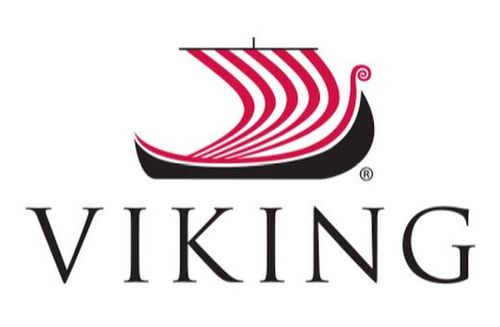Where travel agents earn, learn and save!
News / Viking expedition team announces discovery of new penguin colony in Antarctica
New chinstrap penguin colony recorded following survey at Astrolabe Island by Viking and Oceanites

Viking® announced its expedition team supported the discovery of a new colony of chinstrap penguins not previously known to science on Diaz Rock, near Astrolabe Island, in Antarctica. The finding took place in January 2024 when Viking’s expedition vessel, the Viking Octantis®, visited Astrolabe Island, a three-mile-long island, located in the Bransfield Strait of the Trinity Peninsula in Antarctica. Astrolabe Island is home to a colony of chinstrap penguins that had not been surveyed since 1987. During the visit, Viking’s scientific partner, Oceanites, the leading field research entity in Antarctic penguin monitoring, conducted a visual and thermal aerial survey. The fieldwork documented the first survey in nearly 40 years of the known chinstrap penguin colony of Astrolabe Island and in the process, discovered the additional colony on Diaz Rock. Oceanites will share additional details from the survey in a scientific paper to follow in due course.
This announcement is an example of Viking’s commitment that every expedition voyage on the Viking Octantis and her identical sister ship, the Viking Polaris®, should provide opportunities for meaningful scientific discovery. The findings also come one year after Viking published its first scientific paper in Polar Research, the scientific journal of the Norwegian Polar Institute, following its expedition team’s encounters with rare giant phantom jellyfish in Antarctica.
Viking Expedition Team & Scientific Partners
Viking has created the world’s leading scientific enrichment environment in an expedition setting with the help of partnerships with esteemed academic institutions. During each expedition, visiting researchers from partner institutions are part of the multidisciplinary 36-person expedition team. This group of experts leads guests through meaningful scientific research, providing guiding and interpretation during shore excursions and delivering world-class lectures.
For 30 years, Oceanites, an American not-for-profit field research entity, has led on Antarctic penguin monitoring. As scientific partners, Viking supports the fieldwork of Oceanites through mobilizing teams of penguin researchers on its Antarctic expedition voyages and providing thermal cameras.
In addition to Oceanites, Viking’s other scientific partners include:
- The University of Cambridge’s Scott Polar Research Institute (SPRI): Scientists from SPRI undertake fieldwork on board Viking’s expedition ships and join voyages to share expertise with guests. Cambridge University’s SPRI played a significant role in developing the scientific enrichment program for Viking Expeditions. Specialists from the Institute were also consulted in the development of The Science Lab on Viking’s expedition vessels; the 380-square-foot lab is comprehensively appointed with wet and dry laboratory facilities and supports a broad range of research. Julian Dowdeswell, Professor of Physical Geography at the University of Cambridge, and former director of SPRI, serves as the Chair of the Viking Research Advisory Group, a consortium of scientific leaders from Viking’s partner institutions who have been actively involved in overseeing the field research being undertaken on board.
In 2022, Viking announced the Viking Polar Marine Geoscience Fund which endows the University of Cambridge’s Scott Polar Research Institute (SPRI) with its first-ever fully funded professorship—the Viking Chair of Polar Marine Geoscience. This post enables the development of new lines of research into the behavior of polar environments, including polar ice sheets, sea ice and ocean circulation.
- The Cornell Lab of Ornithology: Ornithologists are regularly on board Viking’s expedition vessels, undertaking post-doctoral research on new observation methods and providing guest advice and interaction.
- National Oceanic and Atmospheric Administration (NOAA) Great Lakes Environmental Research Laboratory (GLERL): Conducts innovative research on the dynamic environments and ecosystems of the Great Lakes and coastal regions to provide information for resource use and management decisions that lead to safe and sustainable ecosystems, ecosystem services, and human communities. Viking’s expedition ships have been designated official NOAA / US National Weather Service weather balloon stations, from which regular launches are undertaken.
- Norwegian Institute of Water Research (NIVA): Scientists from NIVA are engaged in cross-disciplinary research programs on water-related issues. On Viking’s expedition ships, NIVA “FerryBox system” of automated oceanographic instruments are installed to sample the marine and freshwater regions where the vessels sail, to provide continuous information about chlorophyll, oxygen, temperature, salinity, microplastic presence and complementary meteorological data.
- Scripps Institution of Oceanography, UC San Diego: Viking hosts Fjord Phyto, a NASA-funded program of Scripps Institution of Oceanography, UC San Diego, that provides the opportunity for guests to engage in research and public education through novel citizen science sampling of polar phytoplankton, for genetic population analyses.
- The IUCN Species Survival Commission Species Monitoring Specialist Group:Viking coordinates with this international group of experts to develop marine biodiversity monitoring systems that enable Viking expedition vessels to collect valuable species population data.
- Norwegian Polar Institute:The permitting authority for Viking’s Norwegian flagged expedition vessels, who review and approve all of Viking’s expedition and science activities in Antarctica.
Viking Expeditions
Viking offers destination-focused expeditions in Antarctica, the Arctic and North America’s Great Lakes, with an expedition fleet that includes the Polar Class Viking Octantis and Viking Polaris. Designed for discovery by the same team that designed the award-winning Viking Longships® and ocean ships, the 378-guest vessels are specifically built for expeditions, at an ideal size for safety, comfort and to support an unrivalled range of activities in remote destinations. With more indoor and outdoor viewing areas than other expedition vessels, guests are as close as possible to the most magnificent scenery on earth.











